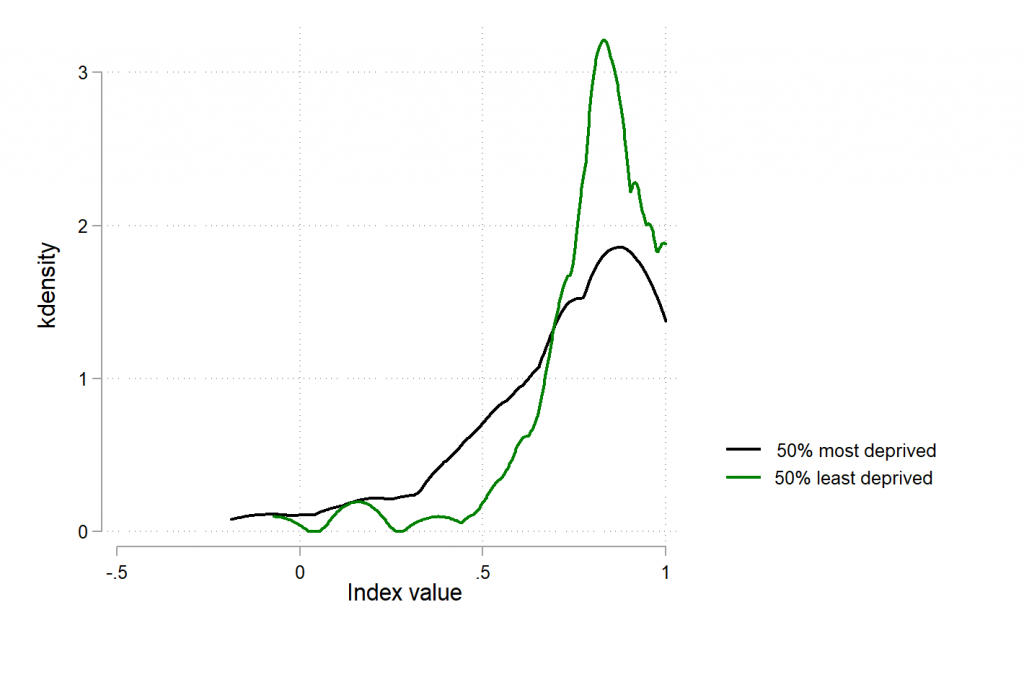Year 2 – Report 2021
Health
We have looked closely at the baseline health of the READY cohort because health status is an identifiable risk factor for a range of desirable socio-economic and psychosocial outcomes in adult life. Difficulties in health and functioning can restrict opportunities in employment, attainment and everyday life.
Therefore, considering the starting point of health for the READY cohort, in comparison with what we would expect in the general population of young people of the same age, is a key element in considering both potential advantages and hinderances in future life trajectory.
Using the EQ-5D-5L health evaluation, we were able to calculate a mean index value for our cohort. The mean index value is an adjusted rating of health across the five domains of ‘usual activities’, ‘pain and discomfort’, ‘self-care’, ‘mobility’ and ‘anxiety and depression’. The mean index value score for the READY sample (0.76) when compared with a same age sample from the Health Study of England (0.88) was highly statistically significantly different (p<0.0001).
Young people’s self-ratings of overall health were much poorer than those in the general population comparison sample. Furthermore, the young people in the READY sample were more likely to have problems in each domain of health, in comparison with the general population sample. The greatest negative difference was in the domain of anxiety and depression.
These findings are not adequately explained by the proportion of deaf young people who might have additional needs. Nor does degree of deafness exert any influence on these outcomes. However, there is a trend toward higher mean index health values amongst those with higher socio-economic status, eventhough these are lower values than in the general population. This chart shows the distribution of values by SES.

Trends in distribution of mean index health values by SES (n=129)
